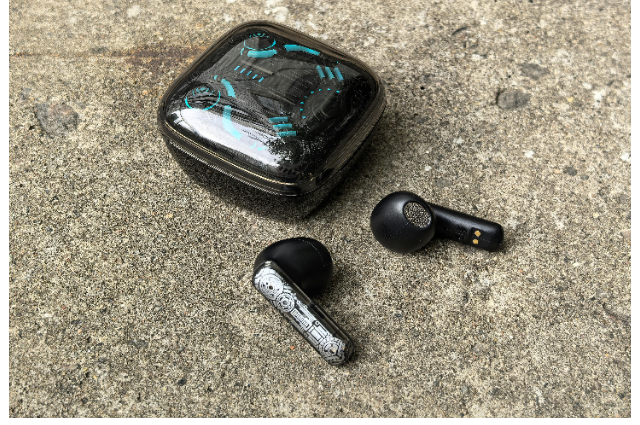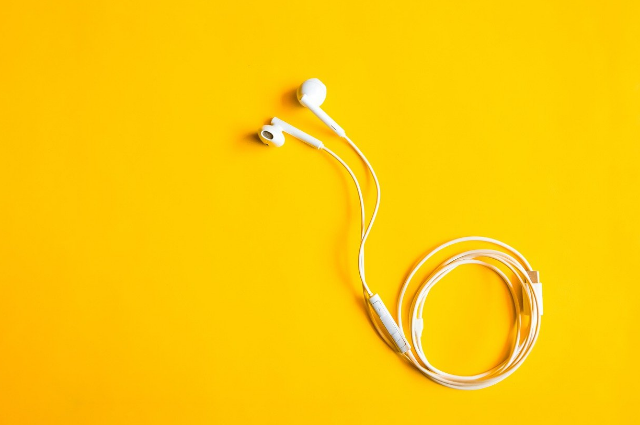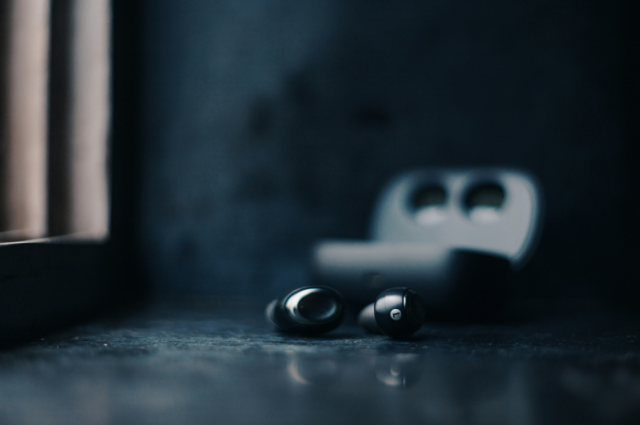5 Reasons Why Wireless Earbuds Are Bad for You and More Crucial Insights You Need to Know

Photo by Andrey Matveev on Pexels
In today's fast-paced world, wireless earbuds have become a popular choice for many due to their convenience and sleek design. However, like any technology, they come with their own set of disadvantages that consumers should be aware of.
Let's delve into the downsides of wireless earbuds, backed by scientific facts, explore the technology behind them, and discuss some of the best alternatives available in the market.
1. Battery Life and Charging Hassles
One of the most significant drawbacks is their reliance on batteries. Unlike their wired counterparts, wireless earbuds require regular charging, which can be inconvenient, especially when you're on the go.
Scientific Fact: Lithium-ion batteries, commonly used in these devices, degrade over time. This means the battery life will diminish, and the devices will need more frequent charging.
Technology Insight: Wireless earbuds use Bluetooth technology to connect to devices, which consumes battery power. The more advanced features such as noise cancellation and high-quality audio streaming require even more power, further reducing battery life.
2. Connectivity Issues
Wireless earbuds can sometimes suffer from connectivity problems. Bluetooth, the primary technology used for wireless earphones, can experience interference from other devices, leading to dropped connections or poor audio quality.
Scientific Fact: Bluetooth operates on the 2.4 GHz frequency, which is shared by many other devices like Wi-Fi routers, microwaves, and even baby monitors. This can cause interference and affect their performance.
Technology Insight: While Bluetooth technology has improved significantly, it's still not perfect. Factors like distance, obstacles, and other electronic devices can impact connectivity.
3. Cost and Durability
Wireless earbuds tend to be more expensive than wired ones. Additionally, their compact and lightweight design can make them more susceptible to damage.
Scientific Fact: The cost includes the price of the battery, Bluetooth components, and other advanced features. Additional components make these listening devices more expensive to manufacture.
Technology Insight: The miniaturization of electronic components can make them more fragile. Dropping them or exposure to moisture can easily damage these sensitive electronics.
4. Potential Health Concerns
There have been concerns about the long-term health effects, especially regarding exposure to electromagnetic radiation.
Scientific Fact: Wireless earbuds emit low levels of non-ionizing radiation. While there is no conclusive evidence that this type of radiation is harmful, prolonged exposure has raised concerns among some researchers.
Technology Insight: Bluetooth technology, used in wireless earphones, operates at a frequency of 2.4 GHz, similar to that used by Wi-Fi and microwaves. Although considered safe, the long-term effects of constant exposure are still being studied.
Volume-Related Hearing Damage:
The WHO warns that listening to audio above 80 decibels for extended periods can cause permanent hearing damage. Most wireless earbuds can reach 100+ decibels, making volume management crucial.
The commonly suggested guideline of the 60/60 rule (60% volume for a maximum of 60 minutes) can help protect your hearing long-term.
Ear hygiene and Bacteria Concerns:
In-ear devices can increase ear wax production and trap bacteria, potentially leading to ear infections. Studies show earbuds can harbour a large amount of bacteria. Regular cleaning with alcohol wipes, avoiding sharing, and giving your ears “breathing breaks” every 2-3 hours can significantly reduce these risks.
Ergonomic Consideration:
Prolonged use of earbuds can cause ear discomfort and fatigue. A poor fit can lead to headaches. Using properly sized ear tips and taking 5-minute breaks every hour can prevent these issues.
5. Environmental Impact
The disposal can have a significant environmental impact. The batteries and electronic components in these devices can be harmful if not disposed of properly.
Scientific Fact: Lithium-ion batteries contain toxic materials that can be harmful to the environment. Improper disposal of these batteries can lead to soil and water contamination.
Technology Insight: The rapid pace of technology means that consumers often replace their cordless earbuds within a few years, contributing to electronic waste. Recycling programs are essential to mitigate this impact, but not all consumers have access to or utilize them.
Exploring Alternatives:
Given the disadvantages of wireless earbuds, it's worth considering some alternatives that might better suit your needs. Here are a few options:
Wired Headphones:

Advantages:
- Better Sound Quality: Wired headphones often provide superior sound quality due to their use of analogue signals, which offer more detailed and balanced audio.
- No Battery Needed: Wired headphones don't rely on batteries, so you don't have to worry about charging them.
- Durability: Without fragile electronic components, wired headphones tend to be more durable and long-lasting.
- Cost-Effective: Generally, wired headphones are more affordable and easier to repair.
Disadvantages:
- Restricted Movement: The cable can limit your mobility and might get tangled.
- Wear and Tear: Over time, the wires can fray or break, requiring replacement.
Wireless Headphones

Advantages:
- Wireless Convenience: No cables mean you have more freedom of movement.
- Hands-Free Use: Many wireless headphones come with built-in microphones for calls and voice commands.
- Advanced Features: They often include features like noise cancellation and touch controls.
- Portability: Easier to carry without the hassle of tangled wires.
Disadvantages:
- Battery Life: Requires regular charging, which can be inconvenient.
- Connectivity Issues: Can experience interference or connectivity problems.
- Cost: Generally more expensive than wired headphones.
- Durability: More prone to damage if dropped or mishandled.
Bone Conduction Headphones
These innovative headphones transmit sound through the bones in your skull, leaving your ears open to ambient sounds.
Advantages:
- Safety: Your ears remain open, making them great for outdoor activities where you need to hear your surroundings.
- Comfort: They can be more comfortable for long-term wear since they don't sit inside your ears.
- Innovative Technology: Uses bone conduction technology to deliver sound, which can be beneficial for individuals with certain types of hearing loss.
Disadvantages:
- Sound Quality: May not provide the same audio fidelity as traditional headphones.
- Cost: Can be more expensive due to the specialized technology.
Consumer Tips for Buying Wireless Earbuds
When shopping for wireless earbuds, there are several factors to consider to ensure you make the right choice.
- Sound quality: This should be a priority. Look for devices with good bass, clear mids, and crisp highs. Mid-range frequencies are typically between 250Hz and 2KHz. Clear mids ensure that vocals and instruments sound natural and are easily heard. High-frequency range is from about 2kHz to 20kHz. Crisp highs add detail and sparkle to the sound, making it more lively and clear.
- Battery life: You don't want your earbuds dying in the middle of a workout or commute. Consider earbuds that offer at least 5-6 hours of listening time on a single charge, and check if the charging case provides additional charges to extend overall usage. Some premium models come with quick charging features, giving you a few hours of playback with just a short charge.
- Comfort and fit: If you plan on wearing them for extended periods, comfort and fit are vital. Some come with various ear tips to help you find the perfect fit. Additionally, consider other needful features, such as noise cancellation, water resistance, and built-in microphones. Brand reputation and customer reviews can provide valuable insights into the product's reliability and performance. Price is always a consideration, but remember that higher cost often correlates with better quality and durability. Finally, ensure that the earbuds are compatible with your devices and have a good warranty for added peace of mind.
DIY Maintenance and Care Tips
Proper maintenance and care can significantly extend the lifespan of your wireless earbuds.
- • Cleaning: Regularly clean the ear tips and the exterior of the earbuds using a soft, dry cloth. For a deeper clean, you can use a small brush or a cotton swab dipped in a mild cleaning solution. Be cautious not to let any liquid enter their openings.
- Storage: Always store your earbuds in their charging case when not in use to protect them from dust, moisture, and physical damage. Avoid exposing them to extreme temperatures, as this can affect the battery life and overall performance. Keep them away from liquids and handle them carefully to prevent drops and impacts.
- Check updates: Regular software updates can also improve performance and fix bugs.
By following these simple care tips, you can ensure your cordless earbuds remain in excellent condition and provide great sound quality for years to come.
Environmental and Ethical Considerations
In the era of increased environmental awareness, the production and disposal of wireless earbuds pose significant challenges. The manufacturing process involves mining precious metals and other materials, which can harm the environment.
Additionally, the short lifespan means they are often replaced every few years, leading to a rise in electronic waste. These discarded devices, particularly their lithium-ion batteries, can contaminate soil and water sources if not disposed of properly.
On the ethical front, there is growing concern about the labour practices involved in the production of wireless earbuds. Ensuring that the products we use are sourced and manufactured in ethically responsible ways is becoming more important to consumers.
Some companies are addressing these concerns by adopting sustainable practices, using recyclable materials, and ensuring fair labour conditions. Brands that focus on environmental sustainability and ethical manufacturing practices offer a more responsible choice for consumers who care about the planet and human rights.
Future Developments in Wireless Audio:
Let's talk about what's coming next in wireless audio.
The biggest game-changer is Bluetooth LE Audio, which is Bluetooth's cool new upgrade. It will make your earbuds use way less battery power (like 50% less!) while giving you better sound quality. There's this new codec called LC3 that's replacing the old SBC codec, and it's a big deal - imagine getting CD-quality audio without killing your battery.
But here's what I'm excited about - spatial audio is becoming mainstream. Imagine wearing your earbuds and feeling like you're in the middle of a concert hall, with sound coming from all directions. Apple's already doing it, and others are jumping on board.
Some companies are even working on devices that can customize the sound based on how your ears are shaped (it's called biometric audio tuning).
Further, they're developing earbuds that can translate languages in real-time and monitor your health stats. We might even see earbuds with built-in AI assistants that can do more than just play music - think personal health coach meets DJ meets translator, all in your ears!
Conclusion
While wireless earbuds offer a great deal of convenience and advanced features, they come with their own set of disadvantages that consumers should consider. Battery life, connectivity issues, cost, potential health concerns, and environmental impact are all important factors to keep in mind.
Exploring alternatives like wired headphones and bone-conduction headphones can help you find the best option for your needs. Each has its own set of advantages and disadvantages, so consider what matters most to you in terms of functionality, comfort, and long-term use.
Ultimately, the best choice depends on your specific needs and lifestyle. By understanding the pros and cons of each option, you can make an informed decision that suits you best.
